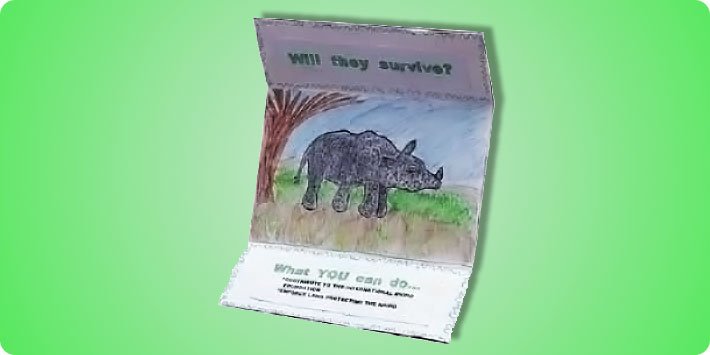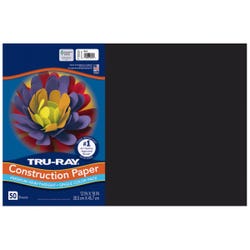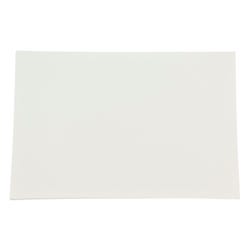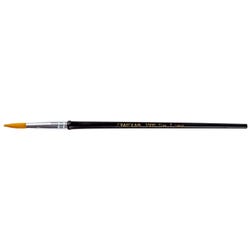Endangered Species

Description
Students use knowledge about endangered species and their habitats to design promotional literature that communicates, through text and illustrations, how people might take action to help save endangered species.
Objectives
- Students select media that best communicate their ideas.
- Students use subjects and symbols that communicate intended meaning in their art works.
- Students make connections between the principles and subject matter in other disciplines and in art.
- Students will assess their own work and the work of others.
Supplies Needed
Tru-Ray Construction Paper, 50-Sheet Pkg., 12 x 18, Black 054150
Crayola® Gel FX Markers Classpack®, Set of 80, 8 Colors 404511
School Smart Glitter Glue, Set of 12 Colors, 4 Oz. 085890
Crayola® 1000 Taklon Watercolor Brush, Size 7 424713
Crayola® Watercolor Colored Pencils Classpack, Set of 240, 12 Colors 248019
White Sulphite Drawing Paper, 90-Lbs., Ream, 12 x 18 206312
You will also need:
Paper towels
Recycled newspaper
Water containers
Resources: (Available in libraries and bookstores)
Beaks by Sneed B. Collard III
Our Wet World by Sneed B. Collard III
The Forest in the Clouds by Sneed B. Collard III
The Living Rain Forest - An Animal Alphabet by Paul Kratter
Winged Migration - The Junior Edition by Stephane Durand and Guillaume Poyet
Standards
National Art Standards:
Visual Arts
CONTENT Standard #1: Understanding and applying media, techniques and processes.
CONTENT Standard #3: Choosing and evaluating a range of subject matter, symbols and ideas.
CONTENT Standard #5: Reflecting upon and assessing the characteristics and merits of their work and the work of others.
CONTENT Standard #5: Making connections between the visual arts and other disciplines.
Science
Science & Technology
Abilities to distinguish between natural objects and objects made by humans.
Unifying Concept & Process - Science as Inquiry
Evolution and equilibrium
Understanding about scientific inquiry
Instructions
1
With students, research, collect, and display photographs of insects, plants, and animals that are on the extreme endangered species list. Design a chart with two columns and about 15 rows. Label one column Endangered Species and the second column Solutions to Avoid Extinction. Use the chart to begin a class discussion around the topic.
2
Discuss what the word endangered means. Endangered species are plants and animals that are in danger of becoming extinct. Extinct means they will no longer live on Earth. Invite children to research the most critically endangered plants and animals. Invite them to add species to the chart if they can offer practical solutions that will help avoid extinction of the plant or animal.
3
Display various advertising and design formats such as tri-folds, brochures, mini-booklets, pamphlets, and one-page flyers.
4
Demonstrate step-by-step watercolor pencil drawing and painting techniques that best illustrate earth, sea, sky, and animals. Include dry brush, wet-on-wet, and dry-on-wet techniques.
5
Ask students to reflect on their knowledge about endangered species. Invite them to design a piece of literature whose text and illustrations call out solutions that help keep endangered species from becoming extinct. Design formats can vary.
6
Cover the work area with newspapers.
7
Select a species listed on the extreme endangered list. Your charge is to reverse a grave situation that exists for an insect, plant, or animal.
8
Visualize and then create a promotional brochure that addresses the issues using watercolor pencils. Consider various design formats, text, and illustrations. Include three or more watercolor drawing and painting techniques in your design format.
9
Use the following 3 techniques as mentioned above: dry brush, wet-on-wet and dry-on-wet. You may also draw with dry watercolor pencils and then apply water washes over the drawing to generate painterly effects. Repeat the process to create layered effects.
10
Clearly articulate and detail your written solution so that the literature becomes an effective public relations tool and captures the audience's attention. Analyze your work for its attention-getting effectiveness and attributes.
Assessment:
Display all designs. Invite students to rank which designs most effectively communicate and address the cause, and then list reasons that support each student's choice. Check to see that three or more watercolor pencil techniques were used to create the art. Summarizelearning. Arrange to exhibit the artwork at a local bank or community center.






